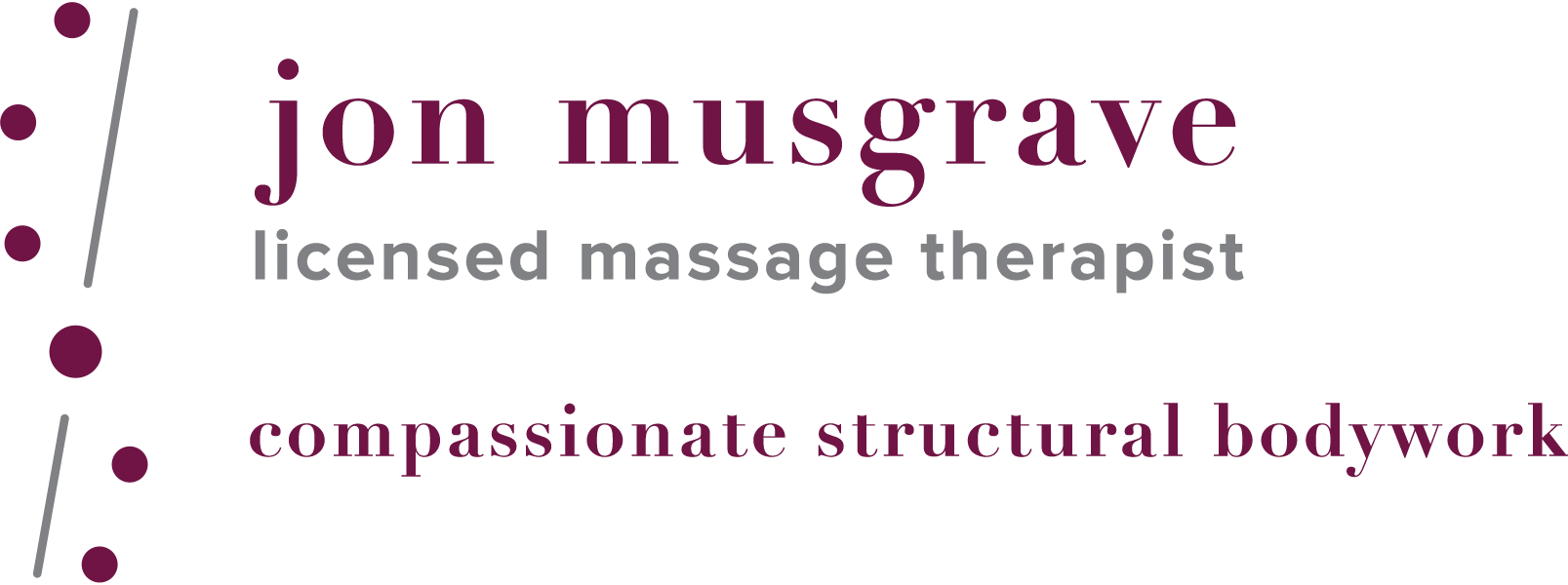Specializing in bodywork & yoga for scoliosis
A significant portion of my bodywork practice is devoted to helping people living with scoliosis to better understand how the curves in the spine affect our overall well-being. I offer three ways to work with scoliosis:
Bodywork: Private sessions utilizing deep massage techniques and craniosacral therapy to help address the restrictions, pains, and injuries that arise because of the scoliosis. 90 minute sessions are recommended, unless you know that shorter sessions are more appropriate for your situation
Yoga Classes: I teach weekly classes for people with scoliosis and other back issues at Samamkaya Yoga Back Care & Scoliosis Collective in Chelsea, Manhattan. Many of the students in my Back Care classes have scoliosis have scoliosis, so please take any class that works in your schedule
In-Person Back Care - Wednesdays, 12:30–2p
Virtual Back Care - Fridays, 10–11:15a (online via Zoom; please see information on the Samamkaya site regarding the minimum recommended and other important information for this class)
In-Person Yoga & Scoliosis - Saturdays, 12:30–2p
Yoga Private Lessons: I have some availability for private yoga lessons. These are 60 minutes long and take place either at Samamkaya or at Deborah Wolk’s private studio on 29th street. Please email me for more information.
Scoliosis is confusing…
I have scoliosis myself, and I know how perplexing scoliosis can be for both the person living with a curvy spine, and the therapist seeking to help. Scoliosis is not simply a twisting and bending of the bones; the muscles, connective tissues, nerves, internal organs, and skin all move along with the bones, and the resulting ebb and flow makes it difficult for our consciousness to understand the sensations coming in from our body. Because of this, most people with scoliosis have a skewed sense of where the different parts of the body are internally, and also where we are in space! Many people with scoliosis have difficulty with directions (immediately telling the difference between left and right, for instance), walking in a straight line, knowing how close they are to things (I’m constantly running into things on my left side because I think I have more room than I do), etc. The asymmetries in the spine also affect the way that we use our arms and legs, and make it more likely to injure one or both of our limbs over time.
In some cases, surgical spinal fusion interventions are taken to minimize the curvature of the spine, but these interventions create their own challenges. I have years of experience working with fused clients to find more freedom in the body.
In working with the scoliotic spine and body, our goal is to help with body find more symmetry. Bodywork can be very helpful because it helps the tensions of the muscles and fascia in the spine and limbs come into better balance, and also helps us to better understand where exactly our patterns are moving us to the left and right, or too far forward or too far back. I always include some amount of breath work in sessions to help clients get a clear sense of where the body is overheld, and of course massage can be very useful in helping to resolve injuries as they arise.
But bodywork isn’t enough. This is true for everyone, but especially for those of us living with scoliosis. Bodywork is useful for opening up our patterns and bringing more symmetry into the body. But if we leave a session and continue to use our bodies asymmetrically through our habitual behaviors, we’ll just end up back in the same place that we started. So having a movement practice designed to foster more symmetrical movement is an essential part of working with our scoliosis. Yoga as practiced and taught by the Iyengar family because of its specific, detailed approach to alignment in the postures, because of the focus on the breath and the effect on the nervous system, and because the practice is slow enough that you’re able to address the asymmetries without getting too caught up in the movements of the body. This is not, of course, the only way to address your scoliosis, but it is the practice that I’ve personally found to be most beneficial.
If this all seems confusing or overwhelming, i understand!
As I said above, scoliosis is confusing! But my approach to bodywork and to yoga can help to start demystifying the situation. I would be delighted to see you in my office or in class to help you begin to better understand how you can work with your scoliosis.
